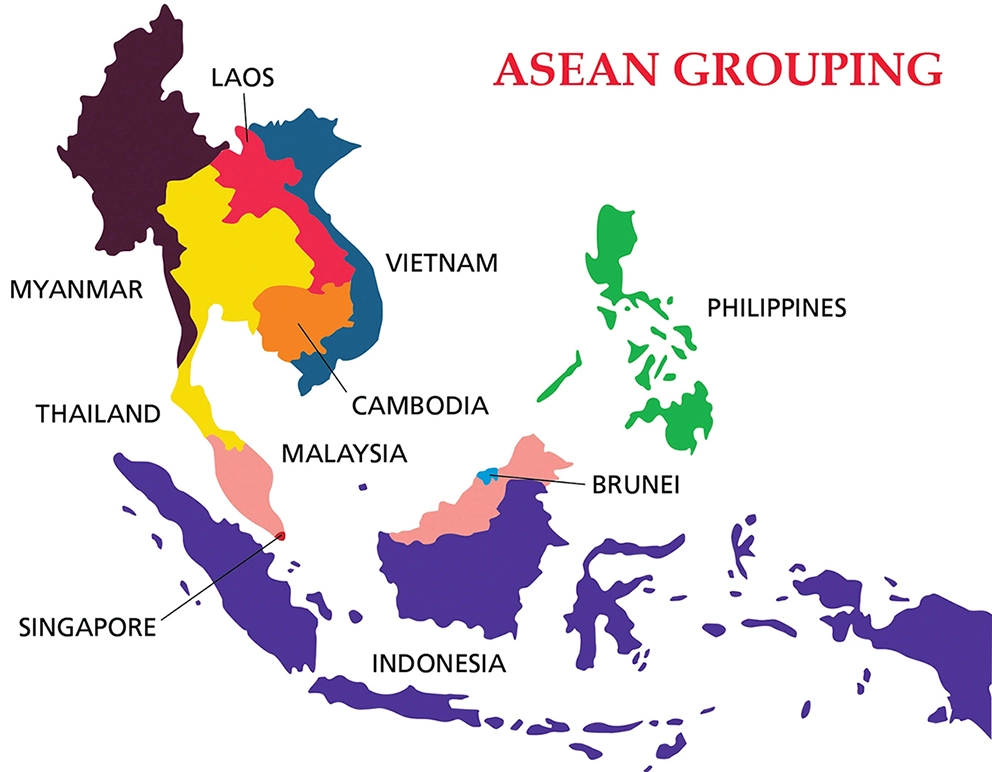International Relations
India’s ASEAN Bonhomie
This editorial is based on “India’s ASEAN challenge” which was published in Financial Express on 17/11/2022. It talks about Indo-ASEAN relations and challenges related to it.
For Prelims: Indo-Pacific region, ASEAN, Act East Policy, Free Trade Agreement, Strategic Partnership to Comprehensive Strategic Partnership, ASEAN-India Green Fund, India-Myanmar-Thailand Trilateral (IMT) Highway, 19th ASEAN-India Summit, South China Sea , Russia-Ukraine war.
For Mains: Areas of Cooperation Between India and ASEAN, Challenges Related to ASEAN.
Against the backdrop of multi-dimensional developments and interventions in the Indo-Pacific region, India’s foreign policy underwent substantial changes in the past few decades.
Starting with the Look East Policy in the 1990s, India advanced its policy in 2014 as Act East Policy taking up its partnership with the Association of Southeast Asian Nations (ASEAN) to a step further which provided an opportunity for India to explore Southeast Asia.
As there are several geopolitical challenges that hinder smooth India-ASEAN transit, it is critical to demonstrate how India's Act East Policy fits into ASEAN's prospects and overcoming the challenges of India-ASEAN ties.
What is the Association of Southeast Asian Nations (ASEAN)?
- ASEAN, a 10-nation grouping, is considered one of the most influential groupings in Southeast Asia.
- It includes Indonesia, Thailand, Vietnam, Laos, Brunei, the Philippines, Singapore, Cambodia, Malaysia and Myanmar.
- ASEAN states are located at a strategically important junction of the Indo-Pacific which makes ASEAN a focal point for both regional and global powers.
What are the Areas of Cooperation Between India and ASEAN?
- Economic Cooperation: ASEAN is India’s 4th largest trading partner. India signed an FTA (Free Trade Agreement) in goods in 2009 and an FTA in services and investments in 2014 with ASEAN.
- ASEAN and India have also adopted a joint statement announcing the elevation of the existing Strategic Partnership to Comprehensive Strategic Partnership.
- Peace and Security: The two sides reaffirmed the importance of maintaining and promoting peace, stability, maritime safety, and overflight freedom in the Indo Pacific.
- Financial Assistance: India provides financial assistance to the ASEAN nations through various mechanisms like ASEAN-India Cooperation Fund and ASEAN-India Green Fund.
- Connectivity: India has been undertaking several connectivity projects like India-Myanmar-Thailand Trilateral (IMT) Highway and the Kaladan Multimodal Project.
- India and ASEAN countries recently gave a new vigour to their ties by establishing a comprehensive strategic partnership at the 19th ASEAN-India Summit in Cambodia.
What are the Challenges Related to ASEAN?
- Territorial Disputes: ASEAN member states are enmeshed in territorial disputes with interested powers for a long time. For example, China’s claim to territories in the South China Sea overlaps with competing claims by Brunei Darussalam, Malaysia, the Philippines and Vietnam.
- Indo-Pacific Rivalry: For a long time, the assumption of China as the primary economic partner and the US as the primary security guarantor has been at the heart of the ASEAN balance.
- Today, that balance is falling apart and the Russia-Ukraine war has further aggravated this tension. This sharpening of major power rivalry in the Indo-Pacific region is threatening the underlying stability on which rested the regional growth and prosperity.
- Unstable Geoeconomics: The geopolitical tension in the Indo-Pacific is producing geoeconomic consequences where issues of trade and technology cooperation as well as supply chain resilience is at peak.
- And this is happening at a time when ASEAN remains a divided organisation internally on how to manage these challenges.
- India-ASEAN Challenge: Many bilateral deals with these nations are yet to be finalised, leading to the halting of various aspects of economic ties.
- In spite of India's commitment to many connectivity projects, such as the India-Myanmar-Thailand trilateral highway, they have not been completed. By contrast, China's Belt and Road Initiative is gaining the trust of some ASEAN countries.
What Should be the Way Forward?
- Building Resilient Supply Chain: Current engagement in value chains between ASEAN and India is not substantial. ASEAN and India can leverage the emerging scenario and support each other to build new and resilient supply chains.
- However, to explore this opportunity, ASEAN and India must upgrade their logistics services and strengthen the transportation infrastructure.
- Maritime Security in Indo-Pacific: The maritime security of the Indo-Pacific region is crucial for the protection of India's interests as well as those of ASEAN.
- Both sides need to work towards ensuring maximum utilisation of resources without harming the marine environment. They need to adopt strong and responsible initiatives to harness the potential of the ocean in a sustainable manner.
- Also ASEAN should emphasise the principles of the UN Convention for the Law of the Sea (UNCLOS) to solve the disputes in the South China Sea region.
- Regional Tourism: India and ASEAN should also enhance regional tourism and people-to-people connectivity as they already have civilisational and cultural influences on each other.
- Unfolding Act-East Policy: Reciprocity and mutual understanding on common concerns will help both ASEAN and India to overcome some of the challenges.
- Through coordination in the fields of Digitalisation, Pharmaceuticals, Agriculture Education and Green Growth will unfold the potential of India’s Act East Policy.
|
Drishti Mains Question Examine the importance of ASEAN for India to maintain an open and free Indo-Pacific region. |
UPSC Civil Services Examination, Previous year Question (PYQ)
Prelims
Q1. Consider the following countries: (2018)
- Australia
- Canada
- China
- India
- Japan
- USA
Which of the above are among the ‘free-trade partners’ of ASEAN?
(a) 1, 2, 4 and 5
(b) 3, 4, 5 and 6
(c) 1, 3, 4 and 5
(d) 2, 3, 4 and 6
Ans: (c)
Q2. The term ‘Regional Comprehensive Economic Partnership’ often appears in the news in the context of the affairs of a group of countries known as (2016)
(a) G20
(b) ASEAN
(c) SCO
(d) SAARC
Ans: (b)
Mains
Q. Evaluate the economic and strategic dimensions of India’s Look East Policy in the context of the post-Cold War international scenario. (2016)





